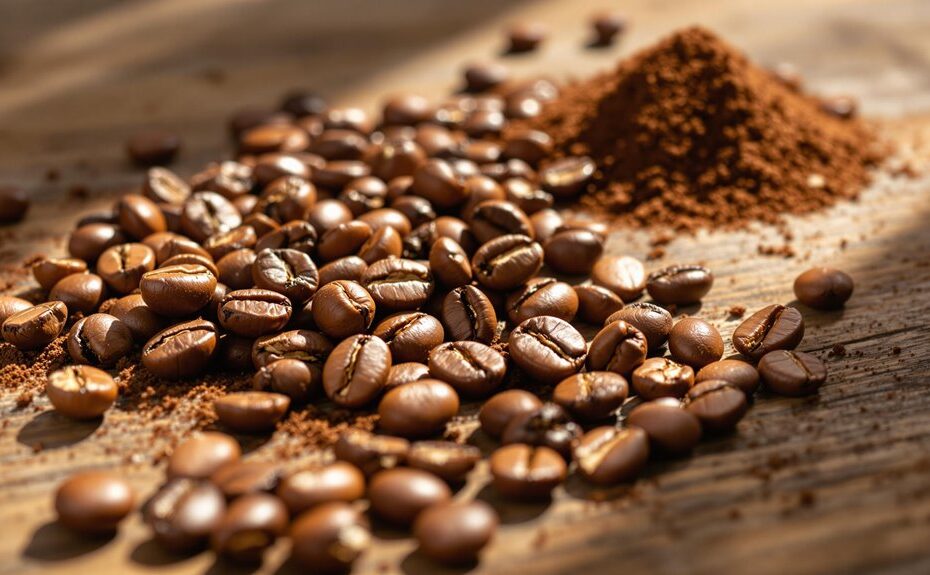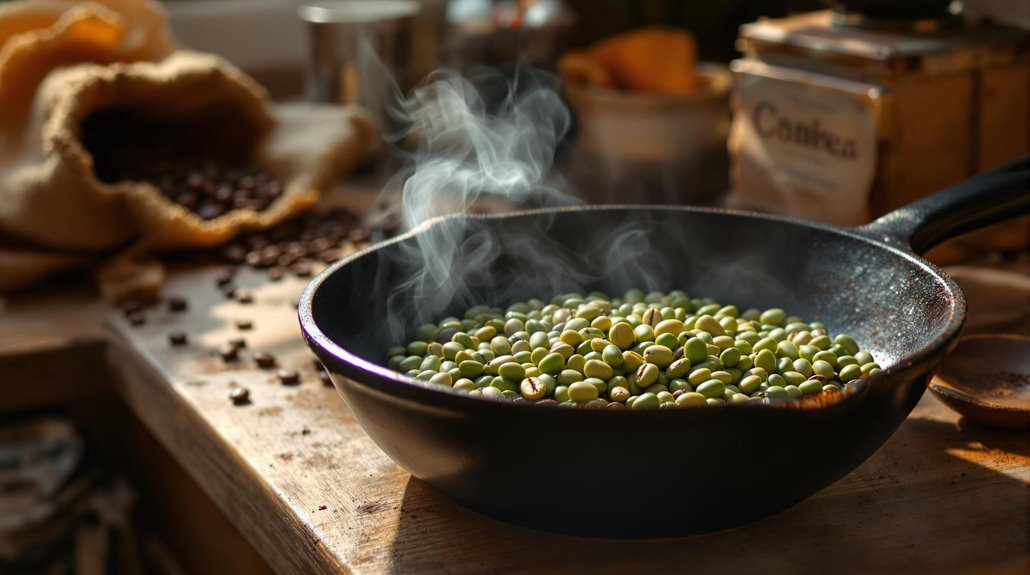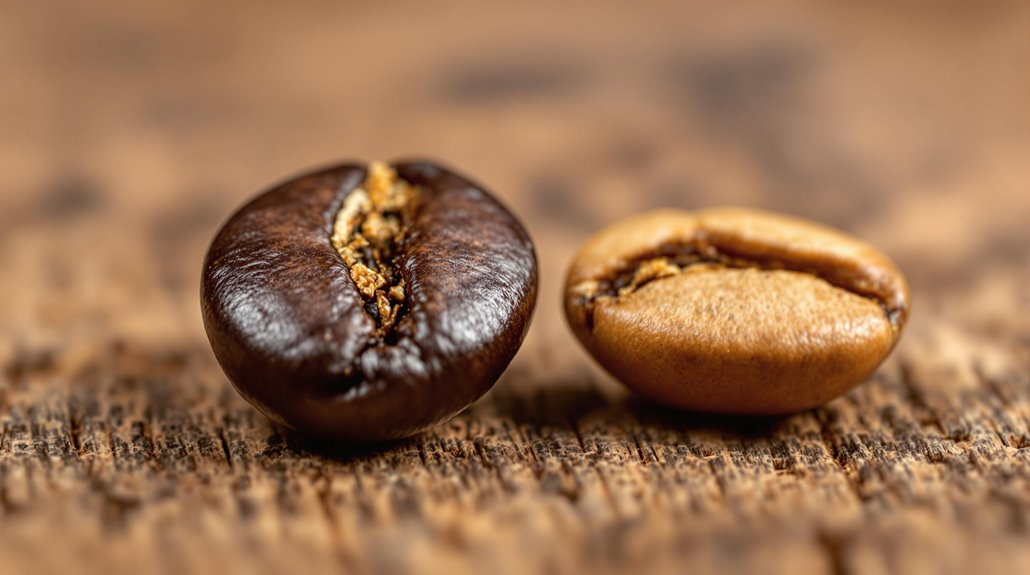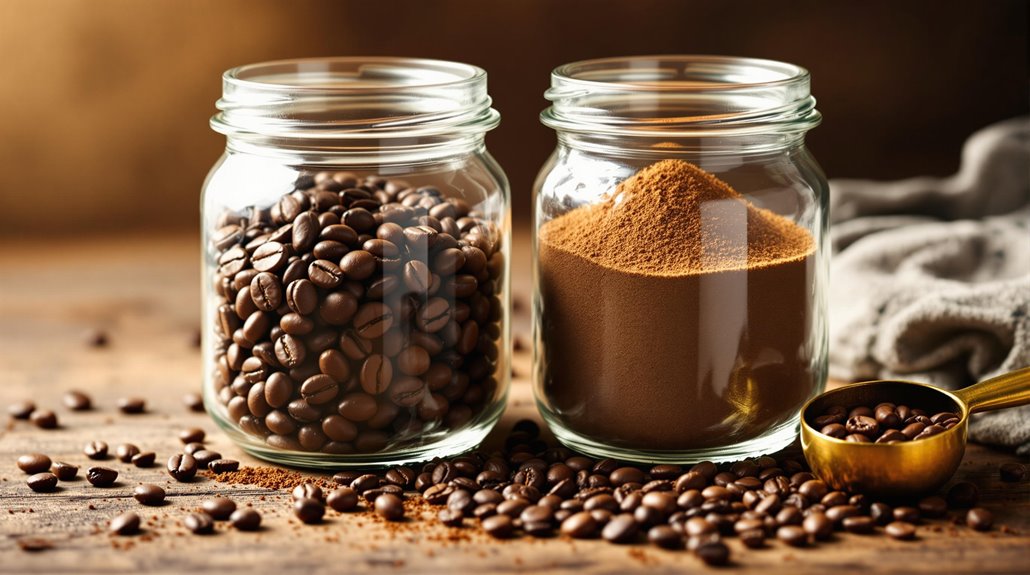





You might wonder how to tell if your coffee beans are fresh, especially when the quality of your brew depends on it. Start by checking the roast date—beans are at their peak within two weeks. Fresh beans often have a glossy sheen and release a rich, inviting aroma. When you brew them, they'll produce a lively bloom, a sign they're still releasing CO2. But what if the beans look dull or smell off? That's where things get interesting, and understanding the details could change how you choose your coffee forever.
Key Takeaways
- Check the roast date; beans are freshest within 7-10 days post-roasting.
- Look for glossy, shiny beans; dull or oily surfaces indicate staleness.
- Smell the beans; a robust, fragrant aroma signifies freshness, while weak smells suggest staleness.
- Test for bloom during brewing; a strong, foamy bloom indicates fresh beans.
- Inspect packaging for a degassing valve, which helps maintain freshness by releasing CO2 and preventing oxygen exposure.
Check the Roast Date
To determine if your coffee beans are fresh, start by checking the roast date on the packaging. The roast date tells you exactly when the beans were roasted, which is critical for evaluating coffee freshness. Freshly roasted coffee beans are at their peak flavor within 7-10 days of roasting, so aim to use beans roasted within the last two weeks for the best results. Avoid purchasing coffee without a roast date, as it's impossible to know how long those beans have been sitting on shelves, potentially losing their freshness and flavor. A "Best By" date isn't as reliable as a roast date, since it doesn't account for the time between roasting and packaging. When you find a bag with a clear roast date, confirm it's recent—ideally within the last two weeks. Roasted coffee beans begin to lose their aromatic oils and complex flavors shortly after roasting, so timing is key. By prioritizing a roast date, you're guaranteeing that your coffee is as fresh as possible, delivering the rich, nuanced taste that freshly roasted beans are known for.
Observe the Bean Appearance
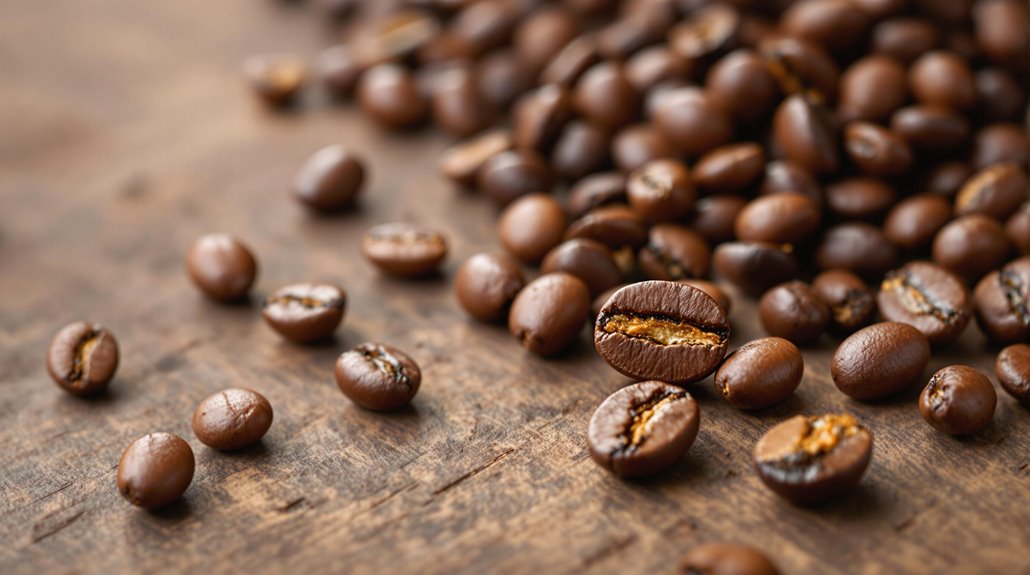
Fresh coffee beans' appearance can reveal a lot about their freshness and quality. When you inspect beans roasted recently, they should have a glossy, shiny surface due to the natural oils extracted during the roasting process. Dark roast beans often appear shinier than light roasts, but excessive oiliness can indicate over-roasting or that the beans are old. Light roasts, on the other hand, may not show as much oil, but this doesn't mean they're stale—roast level affects oil visibility. If the beans look dull, matte, or dry, they've likely lost their freshness and should be avoided. Crackly or dry-looking beans are a clear sign they've degraded and should be discarded. Old beans may also appear uneven or discolored, signaling they're past their prime. When grinding, fresh beans produce consistent coffee grounds, while stale beans often crumble unevenly. Pay close attention to these visual cues to guarantee you're brewing with high-quality, fresh coffee beans.
Smell the Coffee Aroma

The appearance of coffee beans provides valuable insights, but their aroma is equally telling when evaluating freshness. Fresh coffee beans emit a robust, roasty, and fragrant aroma that's unmistakable. When you open a bag of quality coffee, you should immediately notice a strong, inviting smell that hints at the beans' maximum freshness. This aroma is a direct result of the oils and compounds released during roasting, which are at their peak shortly after the beans are roasted.
If the smell is weak, flat, or absent, it's a clear sign the beans are stale. Stale beans lose their vibrant scent over time, often developing a musty or rancid odor due to oxidation. Coffee roasters emphasize that the aroma is a reliable indicator of freshness, as it directly correlates with the coffee taste you'll experience. To assess freshness, take a moment to smell the beans before brewing. If the aroma is dull or unpleasant, the beans are likely past their prime. Trust your nose—it's one of the simplest and most effective tools for ensuring you're working with fresh coffee.
Test for Bloom During Brewing
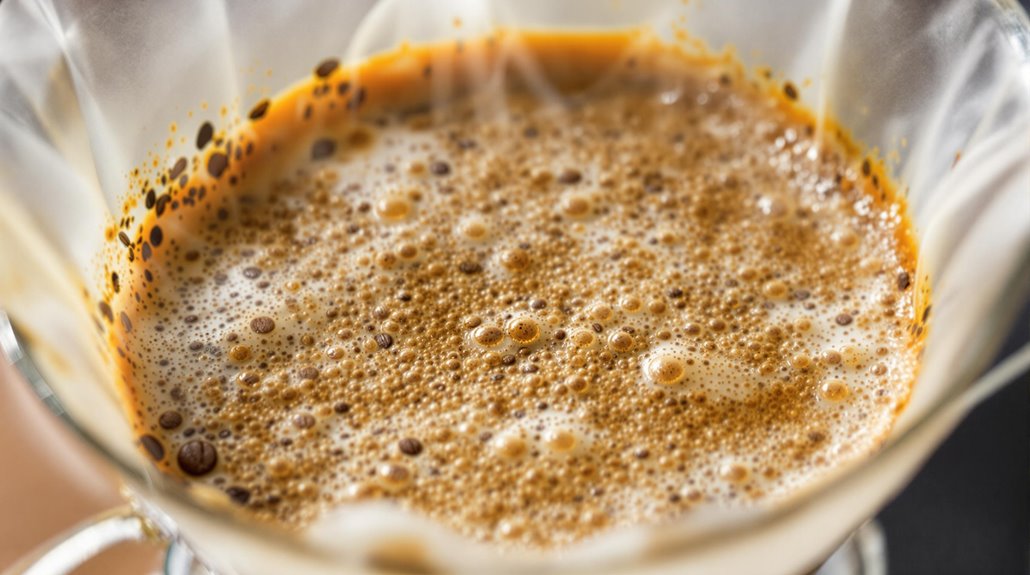
When brewing coffee, observing the bloom can reveal a lot about the beans' freshness. Fresh coffee grounds release carbon dioxide (CO2) when exposed to hot water, creating a visible bloom. This reaction occurs because CO2 is trapped in the beans during roasting and escapes when the grounds are hydrated. A strong, foamy bloom is a clear indicator that your coffee was roasted within the last 7-10 days and is still fresh. To test this, use a pour-over or French Press method, as these brewing techniques make the bloom most apparent. Pour hot water over the grounds and watch for bubbles forming and rising to the surface. If you see a vigorous, foamy bloom, your coffee is likely fresh. Conversely, a weak or absent bloom suggests the beans are older, as the CO2 has already dissipated. This test is a quick, reliable way to gauge freshness without relying on packaging details. Always use freshly ground coffee for the most accurate results, as pre-ground coffee loses CO2 faster. A vibrant bloom not only confirms freshness but also enhances flavor extraction during brewing.
Inspect the Packaging for a Degassing Valve
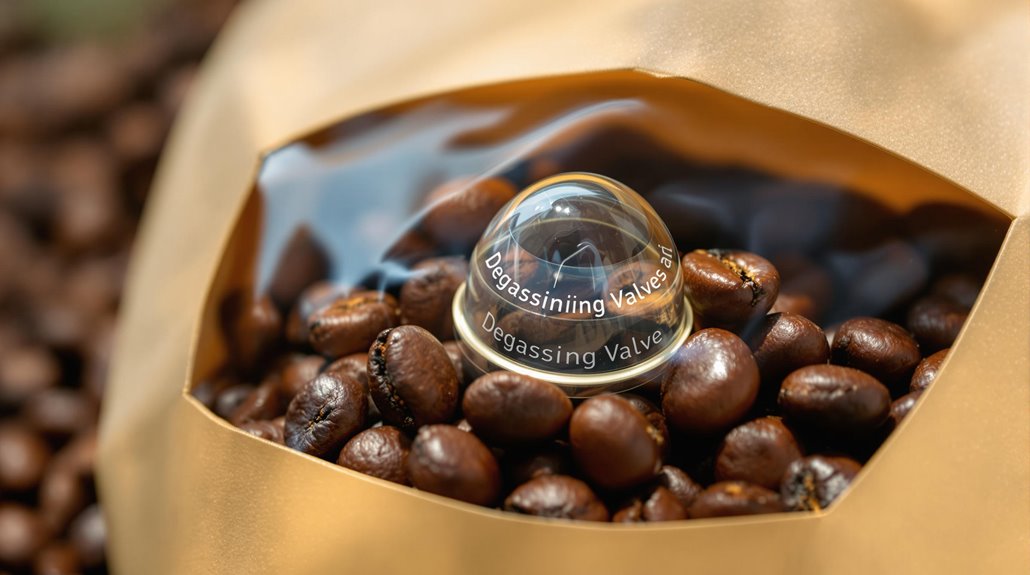
Inspecting the packaging for a degassing valve is a straightforward yet critical step in evaluating coffee bean freshness. A degassing valve, often labeled as a one-way valve, is a small, round feature on coffee packaging that allows carbon dioxide to escape while preventing oxygen from entering. This mechanism is essential because freshly roasted beans release CO2, and without a degassing valve, the packaging could inflate or even burst. The valve guarantees that the beans remain fresh by minimizing oxidation, which can quickly degrade their quality. When you're examining specialty coffee bags, look for this valve—it's a hallmark of thoughtful storage and transport practices. Bags lacking this feature may compromise freshness, as trapped CO2 can accelerate staling. The presence of a degassing valve indicates that the roaster prioritizes preserving the beans' flavor and aroma. Always check for this feature when purchasing coffee, as it's a reliable indicator of proper handling and a commitment to maintaining peak freshness from roast to brew.
Disclosure: As an Amazon Associate, I earn from qualifying purchases.
